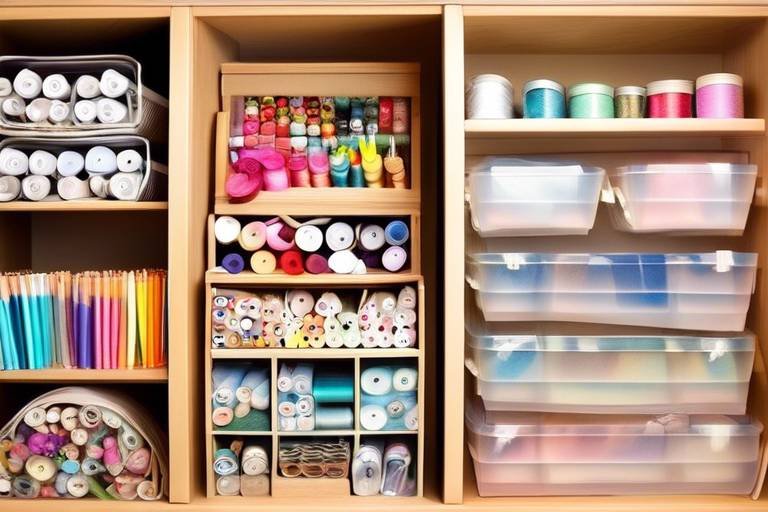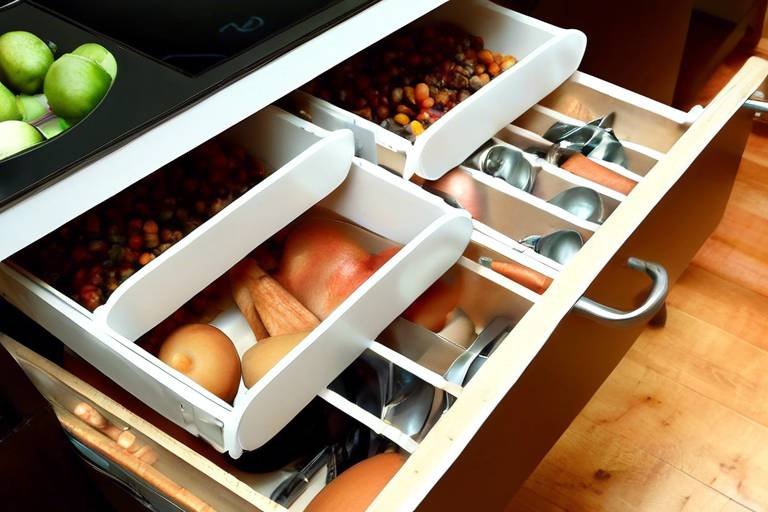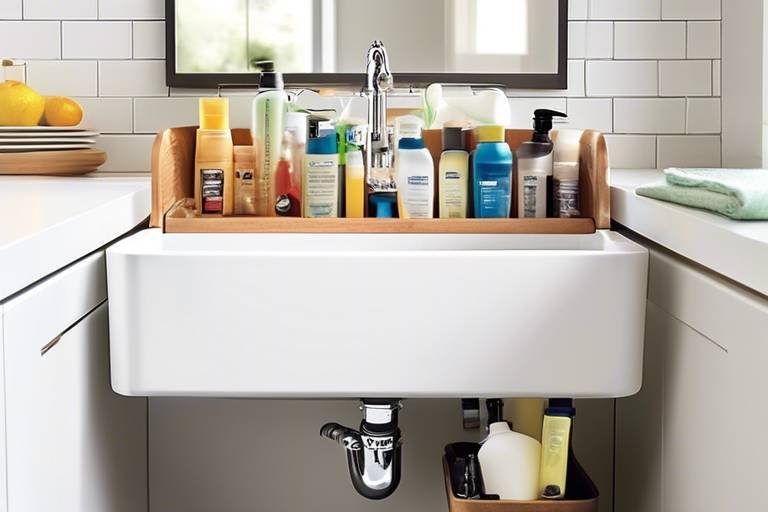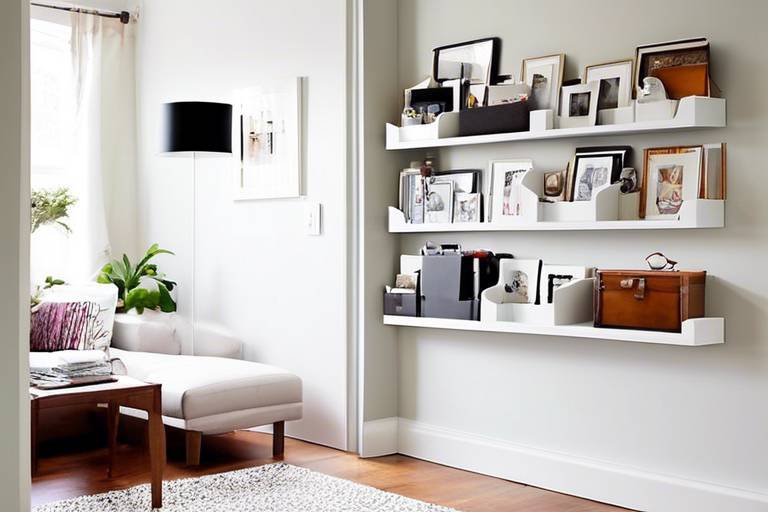Best Tips for Organizing Your Medicine Cabinet
Having a well-organized medicine cabinet is essential for easy access and safety in your home. By following some simple yet effective tips, you can efficiently arrange your medications and first aid supplies for quick retrieval when needed. Let's explore the best strategies to keep your medicine cabinet in top shape!
First and foremost, it's crucial to sort through your medications and discard any expired ones. Expired medicines not only lose their effectiveness but can also be harmful if consumed accidentally. Clearing out these outdated items creates space for current medications and reduces clutter in your cabinet.
For small items like band-aids, cotton balls, and Q-tips, utilize clear containers to store them. Transparent bins allow you to see the contents at a glance, making it easier to locate what you need without rummaging through the cabinet. This simple solution enhances visibility and organization in your storage space.
To streamline your medication search process, consider categorizing your medicines by purpose. Grouping them based on function, such as pain relief, cold and flu, or first aid, helps you quickly identify the medication you need during emergencies. This method saves time and ensures you grab the right medicine when in a hurry.
Keep your daily medications within reach by placing them at eye level or in an easily accessible drawer. Having frequently used medicines readily available simplifies your daily routine and prevents you from searching through the entire cabinet. Convenience is key when organizing your medicine supplies.
Utilizing drawer dividers is another effective way to maintain order in your medicine cabinet. Separating different types of medications using dividers prevents them from getting mixed up and allows you to categorize them neatly. This organizational tool helps you locate specific medicines with ease.
Ensure shelves and containers are labeled clearly to identify their contents. Proper labeling not only helps you find items quickly but also ensures that everyone in your household knows where things belong. This practice promotes consistency and prevents confusion when accessing medications.
When storing medications, it's important to prioritize safety. Keep your medicines in a cool, dry place away from direct sunlight to maintain their potency. Additionally, store them out of reach of children and pets to prevent accidental ingestion. Safety precautions are crucial when organizing your medicine cabinet.
Make it a habit to regularly review and reorganize your medicine cabinet every few months. Set aside time to check for expired items, dispose of them properly, and rearrange your supplies for better efficiency. This routine maintenance ensures that your medicine cabinet remains organized and up to date.

Sort and Discard Expired Medications
Learn how to efficiently arrange your medicine cabinet for easy access and safety.
When it comes to organizing your medicine cabinet, the first step is to sort through and discard any expired medications. Expired medicines not only lose their effectiveness but can also be harmful if consumed. By clearing out these expired items, you make room for current medications and reduce the risk of accidental ingestion.
One effective way to handle this task is to create a designated area for expired medications. By setting up a separate container or section in your cabinet specifically for expired items, you can easily identify and remove them when needed.
Remember, just like a chef removes spoiled ingredients from the pantry to make room for fresh ones, you should regularly check your medicine cabinet for expired medications to maintain a safe and organized space.
Additionally, you can check the expiration dates of your medicines by creating a simple table with columns for medication name and expiration date. This can help you keep track of when each medication needs to be replaced, ensuring that your cabinet is always stocked with safe and effective options.
By taking the time to sort and discard expired medications, you not only declutter your medicine cabinet but also prioritize safety and efficiency in managing your healthcare needs.
After organizing your medicine cabinet, you may have some questions about maintenance and safety. Here are some common queries:
- How often should I check for expired medications?
- What is the best way to dispose of expired medicines?
- Can I use expired medications in case of emergency?
Remember, it's essential to stay informed and proactive when it comes to managing your medications for optimal health and safety.

Use Clear Containers for Small Items
Learn how to efficiently arrange your medicine cabinet for easy access and safety.
When it comes to organizing small items in your medicine cabinet, clear containers can be a game-changer. By using transparent bins or containers, you can easily see what's inside without having to rummage through everything. This is especially helpful for storing items like band-aids, cotton balls, and Q-tips, as their small size can often make them hard to find in a cluttered cabinet.
Imagine being able to locate a band-aid in seconds when you have a cut, instead of frantically searching through a jumbled mess of items. Clear containers not only provide visibility but also add a touch of organization to your cabinet, making it look neat and tidy.
If you have multiple small items that tend to get lost easily, consider using a small drawer organizer with clear compartments. This way, each item has its designated spot, making it effortless to grab what you need when you need it.
By incorporating clear containers for your small items, you can streamline your daily routine and ensure that essential supplies are always within reach.
Q: How often should I review and reorganize my medicine cabinet?
A: It is recommended to review and reorganize your medicine cabinet every few months. This practice helps you discard expired medications, ensure everything is easily accessible, and maintain a safe and organized cabinet.
Q: Can I store medications in the bathroom medicine cabinet?
A: It is not ideal to store medications in the bathroom due to the humidity and temperature fluctuations, which can degrade the effectiveness of the medications. It's best to store them in a cool, dry place away from direct sunlight.

Categorize Medications by Purpose
When it comes to organizing your medicine cabinet, one effective strategy is to categorize medications by their purpose. By sorting your medicines based on their functions, such as pain relief, cold and flu, or first aid, you can easily locate the specific medication you need without rummaging through the entire cabinet.
Imagine your medicine cabinet as a well-organized library, with each shelf representing a different genre of books. Just like you wouldn't mix up mystery novels with cookbooks, keeping your medications categorized by purpose ensures quick and efficient access when needed.
Creating designated sections for different types of medications can streamline your daily routine and save valuable time during emergencies. For instance, having a separate area for pain relievers can prevent confusion and help you grab the right medication promptly when a headache strikes.
Moreover, categorizing medications by purpose not only enhances accessibility but also promotes safety. By clearly distinguishing between different types of medicines, you reduce the risk of accidentally taking the wrong medication, especially in situations where quick action is crucial.
To further optimize this organizational method, consider using labeled containers or shelves to visually indicate the purpose of each medication category. This visual cue not only aids in quick identification but also serves as a reminder to restock specific medications when running low.
By categorizing your medications by purpose, you transform your medicine cabinet into a well-structured space that promotes efficiency, safety, and peace of mind. So, next time you reach for a medication, you'll know exactly where to find it, making the process seamless and stress-free.

Keep Daily Medications Within Reach
Learn how to efficiently arrange your medicine cabinet for easy access and safety.
When it comes to your daily medications, convenience is key. You want to ensure that the medications you need to take regularly are easily accessible. One effective way to achieve this is by placing them at eye level or in a drawer that you can easily reach without having to rummage through the entire cabinet. By keeping your daily medications within arm's reach, you not only save time but also make it more likely that you'll stick to your medication routine.
Imagine starting your day and effortlessly grabbing your daily vitamins or allergy medication without any hassle. It's like having your morning routine streamlined for maximum efficiency. By having your daily medications within reach, you eliminate the frustration of searching for them when you're in a rush or not fully awake.
If you have multiple daily medications, consider using a designated section or container within your medicine cabinet to keep them organized. This way, you can easily spot and access each medication without confusion. Additionally, you can use labels or color-coded containers to further distinguish between different medications, making the process even smoother.
By prioritizing the accessibility of your daily medications, you not only simplify your daily routine but also ensure that you never miss a dose. Remember, consistency is key when it comes to managing your health effectively, and having your medications within reach is a small but impactful step towards achieving that.

Utilize Drawer Dividers
When it comes to organizing your medicine cabinet efficiently, one of the best tips is to . Drawer dividers are incredibly useful for separating different types of medications, ensuring order, and preventing mix-ups. By categorizing your medicines into specific sections within the drawer, you can easily locate what you need without rummaging through a cluttered mess.
Imagine your medicine cabinet as a well-organized library, with each drawer divider acting as a shelf for a specific genre of books. Just like how books are sorted into categories for easy browsing, drawer dividers help you categorize your medications based on their purpose or type.
By using drawer dividers, you can create designated areas for pain relief medications, cold and flu remedies, first aid supplies, or any other categories that suit your needs. This not only streamlines the process of finding the right medication but also minimizes the chances of accidentally taking the wrong one.
Furthermore, drawer dividers can be customized to fit the size and shape of your medications, ensuring a snug and secure fit for each item. This customization prevents bottles from toppling over and spilling, keeping your medicine cabinet neat and organized at all times.
Additionally, drawer dividers allow you to maximize the space within your cabinet by utilizing every inch efficiently. Instead of stacking medications on top of each other and causing a jumbled mess, the dividers create distinct compartments that make the most of the available storage space.

Label Shelves and Containers
When it comes to organizing your medicine cabinet, one crucial step is to effectively. By clearly marking the shelves and containers, you not only create a systematic layout but also ensure that everyone in the household can easily locate and return items to their designated spots.
Imagine a scenario where you need a specific medication in a hurry. With labels on shelves and containers, you can quickly scan and find what you need without any confusion or delay. It's like having a well-organized library where each book is correctly labeled, making it effortless to locate the one you want.
Using labels is especially helpful for households with multiple members, as it streamlines the process of finding medicines and putting them back in the right place. This practice not only saves time but also reduces the chances of mix-ups or accidental consumption of the wrong medication.
Consider creating a labeling system that is clear and intuitive. You can use color-coded labels, write the names of medications in bold letters, or even include brief descriptions of each item. This level of organization not only enhances efficiency but also promotes safety within your home.
If you have a variety of medications, supplements, or first aid items in your cabinet, labeling shelves and containers becomes even more essential. By categorizing items and providing clear labels, you create a user-friendly environment that promotes easy access and inventory management.
Moreover, labeling shelves and containers can also assist in inventory control. By knowing exactly what items you have and where they are located, you can avoid overstocking certain medications or running out of essential supplies unexpectedly.
In conclusion, the simple act of labeling shelves and containers in your medicine cabinet can make a significant difference in how efficiently you can access and manage your medications. It's a small yet impactful step towards creating a well-organized and user-friendly storage space for all your healthcare essentials.

Store Medications Safely
When it comes to storing medications, safety should always be a top priority. Proper storage not only ensures the effectiveness of the medications but also prevents any accidents or misuse. To store medications safely, it is crucial to consider factors such as temperature, humidity, accessibility, and visibility.
One of the key aspects of storing medications safely is to keep them in a cool, dry place. Medications can lose their potency if exposed to extreme temperatures or humidity. Therefore, storing them in a bathroom cabinet, where the moisture levels are high, is not ideal. Instead, opt for a shelf in a closet or a dedicated medicine cabinet away from direct sunlight and moisture.
Another important consideration is to keep medications out of reach of children and pets. To prevent accidental ingestion, store medications in a high cabinet or a locked box. It's essential to ensure that children cannot access medications easily, as many medications can be harmful if consumed inappropriately.
Proper labeling is also crucial for safe medication storage. Clearly label each medication with its name, dosage, and expiration date. This not only helps you keep track of your medications but also prevents any confusion, especially if multiple people in the household are taking different medications.
Additionally, it's advisable to store medications in their original containers. The original packaging typically contains important information such as dosage instructions, potential side effects, and expiration dates. Avoid transferring medications to different containers unless necessary, as it can lead to mix-ups or confusion.
Regularly checking expiration dates is vital for safe medication storage. Set a reminder to review your medications every few months and discard any expired or unused medications. Proper disposal of medications is essential to prevent accidental ingestion and environmental contamination.
By following these guidelines for storing medications safely, you can ensure that your medications remain effective and pose minimal risk to your household members. Remember, safety always comes first when it comes to managing your medicine cabinet.

Regularly Review and Reorganize
Learn how to efficiently arrange your medicine cabinet for easy access and safety.
It's crucial to set aside time every few months to review and reorganize your medicine cabinet. Regularly checking through your medications not only helps you get rid of expired items but also ensures that everything is in its proper place for quick access when needed.
During your review, take the opportunity to check expiration dates and dispose of any medicines that are no longer safe to use. By maintaining this habit, you can keep your cabinet clutter-free and avoid the risk of accidentally taking expired medications.
Consider creating a checklist to guide you through the process of reviewing and reorganizing. This can help you stay organized and ensure that no medications are overlooked during the cleanup. You may also want to take note of any medications that need to be restocked to avoid running out of essential items.
When reorganizing your medicine cabinet, think about how you can optimize the space for better efficiency. Consider using drawer dividers, clear containers, or shelf organizers to keep everything neatly arranged and easily accessible. By categorizing your medications by purpose and labeling shelves and containers, you can streamline the process of finding what you need.
Remember, the key to maintaining an organized medicine cabinet is consistency. By making regular reviews and reorganizations a part of your routine, you can ensure that your medications are always up-to-date, well-organized, and easy to find.
Have more questions about organizing your medicine cabinet? Check out our FAQs below:
- Q: How often should I review my medicine cabinet?
- A: It's recommended to review your medicine cabinet every 3 to 6 months to ensure that your medications are current and properly organized.
- Q: Can I reuse old medication containers?
- A: It's best to use new containers for storing medications to avoid contamination or confusion.
- Q: What should I do with expired medications?
- A: Expired medications should be properly disposed of following local guidelines or taken to a pharmacy for safe disposal.
Frequently Asked Questions
- How often should I review and reorganize my medicine cabinet?
It is recommended to review and reorganize your medicine cabinet every few months. This practice helps you discard expired medications, ensure easy access to necessary items, and maintain an organized system for your health essentials.
- Why is it important to categorize medications by purpose?
Organizing medications by purpose allows you to quickly locate the specific type of medication you need without rummaging through the entire cabinet. This categorization system also helps in preventing confusion and potential mix-ups between different types of medications.
- What is the significance of storing medications safely?
Storing medications in a cool, dry place away from direct sunlight is crucial for maintaining their effectiveness. Additionally, keeping medications out of reach of children and pets ensures their safety and prevents accidental ingestion, which could be harmful.
- How can clear containers help in organizing a medicine cabinet?
Clear containers provide visibility to small items like band-aids, cotton balls, and Q-tips, making it easier to locate them when needed. By using transparent bins, you can quickly identify the contents without having to open multiple containers, saving time and effort.
- What should I do with expired medications?
It is essential to dispose of expired medications properly to avoid accidental consumption. You can check with your local pharmacy or health department for guidelines on safe disposal methods, which often include drop-off locations or specific disposal instructions to follow.



















